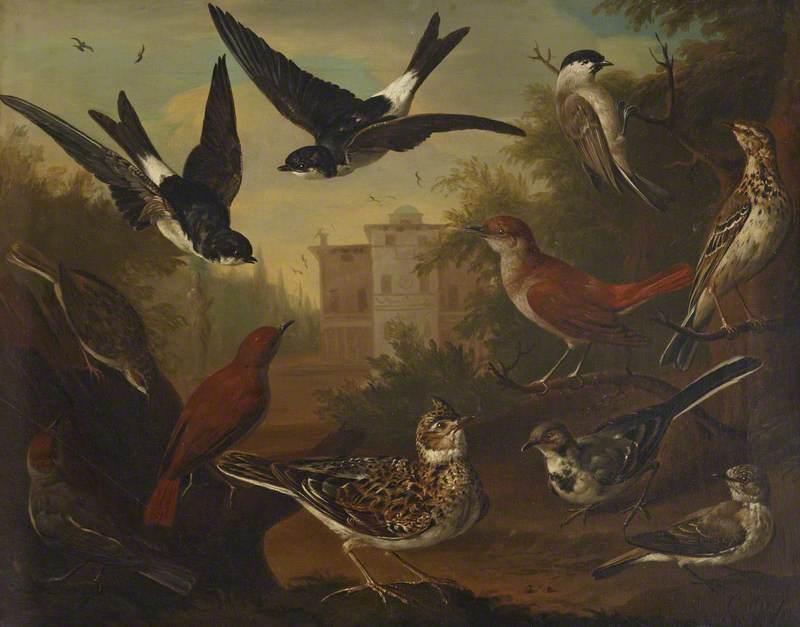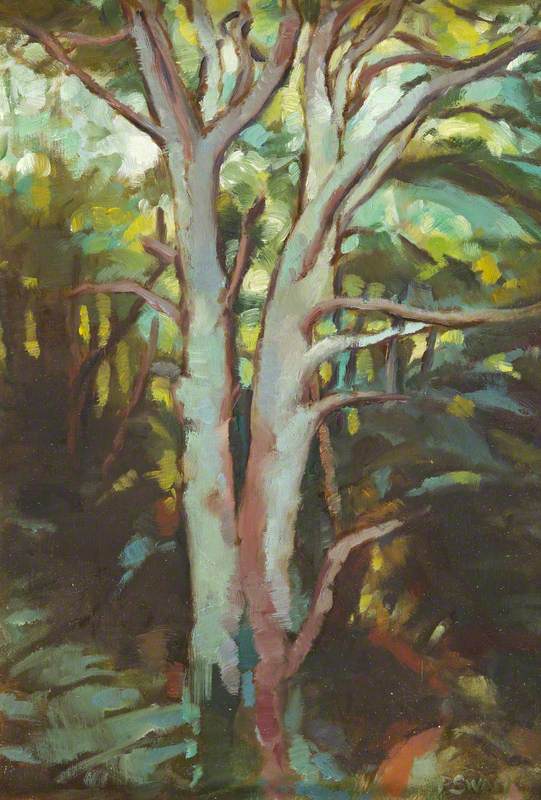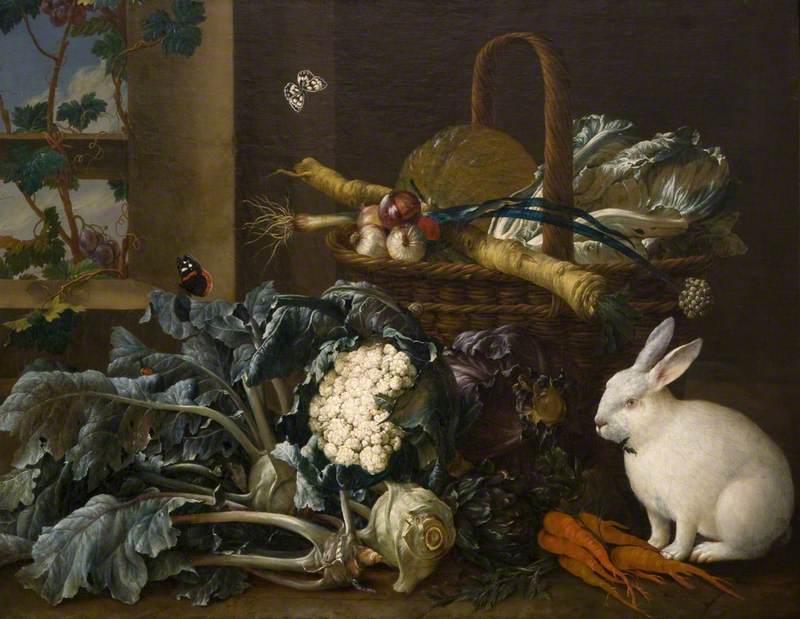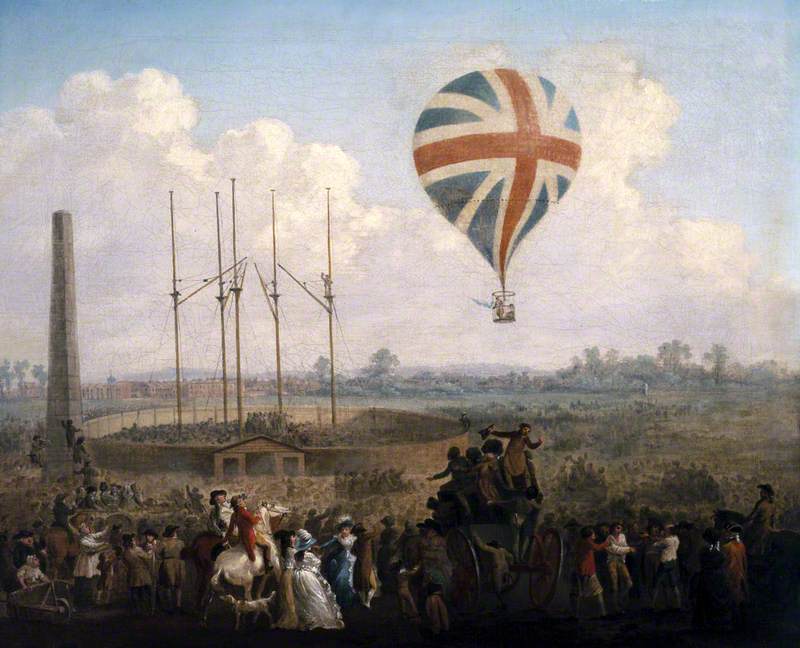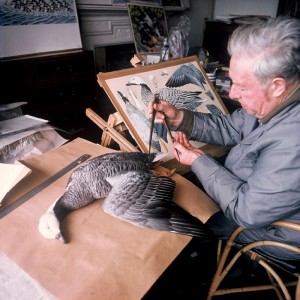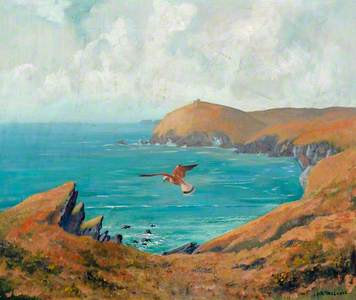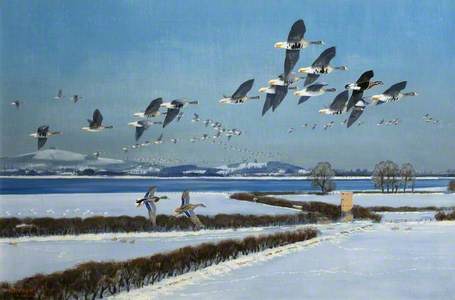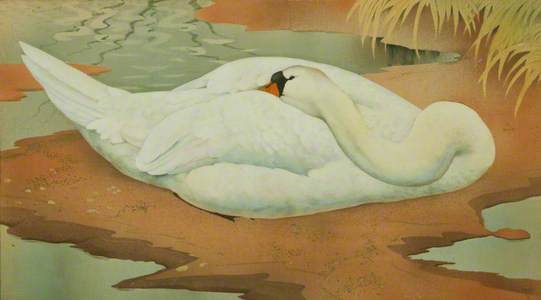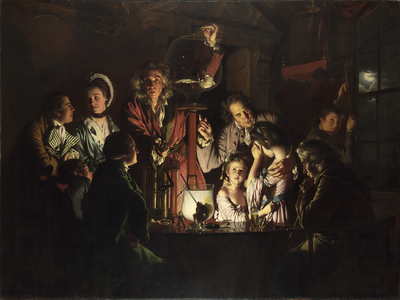I am not the only human being in childhood – and adulthood too – to have gazed into the sky, glimpsed a bird and dreamt of taking flight. Who wouldn't love, once in a while, to be able to shake off our earth-boundedness and soar? Growing up in the heart of an inner-city, during childhood the birds I mainly saw were those feathered friends which dwell in urban areas such as pigeons and magpies and others, too, which I could not then name. I have since been lucky enough to go bird-watching with the keen bird-watcher and Booker Prize winner Margaret Atwood where we spotted winged things ranging from a kestrel to a dragonfly in Wicken Fen, the UK's oldest nature reserve.
Heartbreaking statistics reveal that one in four birds are now on the Red List of Conservation Concern, needing urgent conservation action. The RSBP reveals 67 Red Listed birds including puffins, turtle doves, cuckoos, skylarks, lapwings. Now seems a good time to pay attention to the long fascination that artists have had with birds. The birdwatching tips I learnt during my adventure with Margaret Atwood include listening for the distinctive and defining details of birdsong to help identify them. The artists in the Art UK archive have certainly also put this into practice, honing in on the resplendent details of the birds they bring into being through paint.
I looked for those endangered birds on the Red List of Conservation Concern and found many fluttering through the Art UK archive and it's worth spending time remembering how glorious they are.
There is Black Grouse by Archibald Thorburn (1860–1935) kept in Tullie House Museum and Art Gallery. Striking colours fill this painting, including red on the bird's head framing its eyes, and deep midnight blue, as well as black and white.
I also love the Puffin by an unknown artist flying through a bright blue sky.
Protea and Golden-Breasted Cuckoo of South Africa
c.1882
Marianne North (1830–1890) 
Two cuckoos are colourfully captured in Marianne North's painting.
There is Young Lapwing by Richard Barrett Talbot Kelly.
The painting British Birds (...) by Charles Collins depicts several of the birds on the Red List, including skylark, wagtail and nightingale.
The Lake, a Celebration of Life
1962
Peter Markham Scott (1909–1989) 
Some of my favourite bird paintings in the archive are by the ornithologist, conservationist and painter Peter Markham Scott who has some magnificent evocations of flight such as The Lake, a Celebration of Life a captivating painting of unknown birds in flight and people reaching up to them.
He has shown birds in all states of being, from Mallards Preening and Drying to Widgeon Asleep in the Noonday Sun.
Also powerful is Scott's Nenes on Mauna Loa, Hawaii held at the Wildfowl and Wetlands Trust.
Red-Breasted Goose and Whitefronts at Slimbridge, Gloucestershire
1964
Peter Markham Scott (1909–1989) 
Red-Breasted Goose and Whitefronts at Slimbridge, Gloucestershire is held at the Nature in Art museum, the world's first museum dedicated exclusively to fine, decorative and applied art inspired by nature. Its collection spans 1,500 years with work from over 50 countries.
Another favourite painter of birds is the naturalistic painter Charles Frederick Tunnicliffe who excelled at bringing birds to life in art, ranging from watercolours to oil paintings and wood engravings, usually with the birds depicted in all their glory in their natural settings. Art UK showcases his Magpies Roosting, Two Barnacle Geese, and Young Swan.
As for those birds fluttering through our cities, I checked up for them in the collection and also found them in abundance.
While pigeons are often regarded as pests, I always delighted in seeing them, and there is a marvellous depiction of them by Jean Young – Feeding the Pigeons.
I found magpies, too – such as Young Magpie by Dennis F. Harle and James Bridgen's almost abstract depictions, The Magpie Tree and Tree With Magpie and Earth.
It was heartening to read the recent announcement that the co-authors of The Lost Words, Robert Macfarlane and artist Jackie Morris, are working on a project called The Book of Birds which will combine artwork and words and be a new kind of field guide to celebrate the nearly 70 species of birds currently in severe decline in the UK. The Lost Words itself combined artist Jackie Morris' magnificent paintings with Macfarlane's spellbinding words, and birds brought to brilliant life in The Lost Words include the glorious goldfinch, kingfisher, and raven.
I think of all the birds fluttering throughout art and how they have long haunted the human imagination, made us aspire towards them but also to remember our own earth-boundedness and to respect them in their own right – think of the myth of Icarus, whose father fashioned wings for him from feathers and wax. A wonderful depiction of those wings is in The Lament for Icarus by Herbert James Draper.
With my mind filled with birds, I step out for my morning walk in the park, and my eyes are more attuned to glimpsing the fine creatures, my ears more attuned too to their sound as the cacophony of traffic falls away. It is haunting to think that birdsong is becoming less and less frequent and might one day disappear completely if we don't act now. Sparking a love of birds through appreciating them anew through artwork can turn us back to the actual creatures themselves, to admire them, and do our best to try and save them.
Anita Sethi, journalist, writer and critic




